Scientist of the Day - Elizabeth Gould

Linda Hall Library
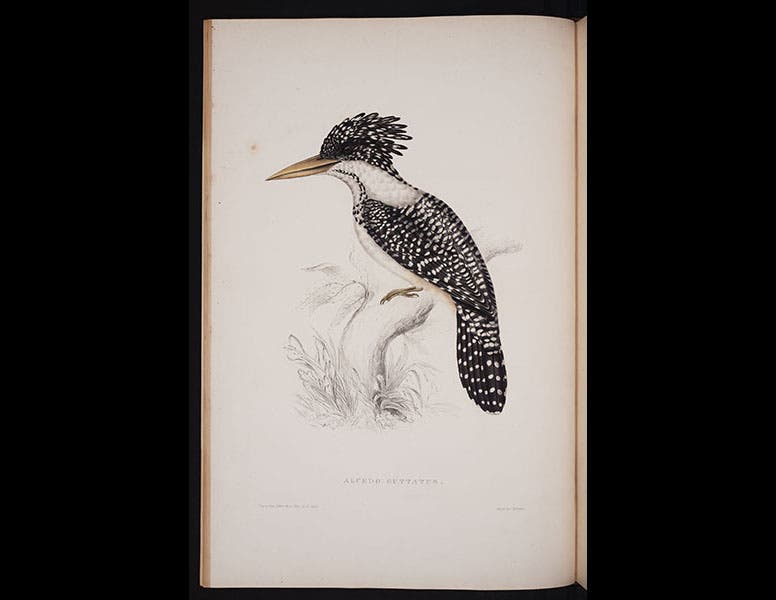
Linda Hall Library
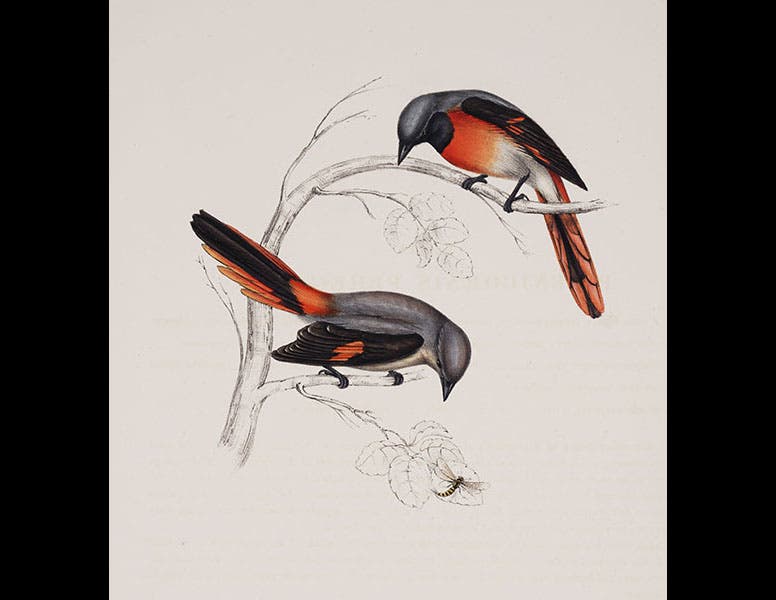
Linda Hall Library
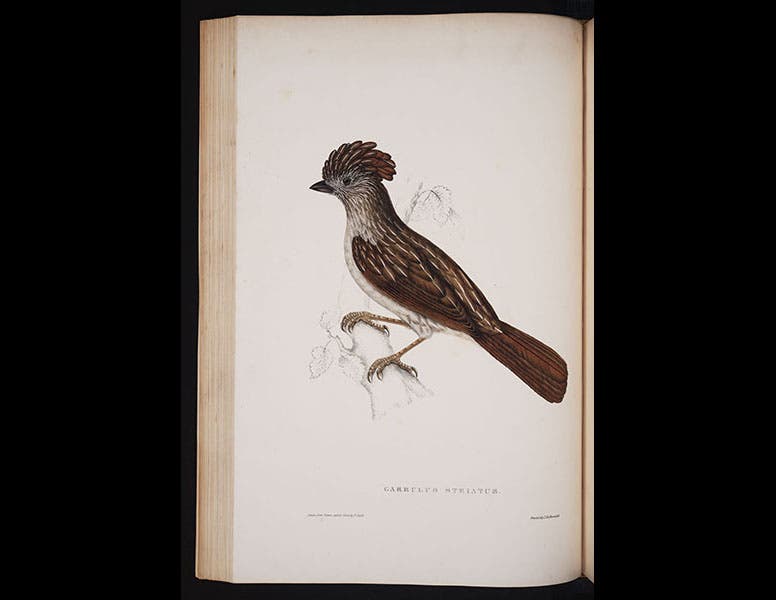
Linda Hall Library

Linda Hall Library
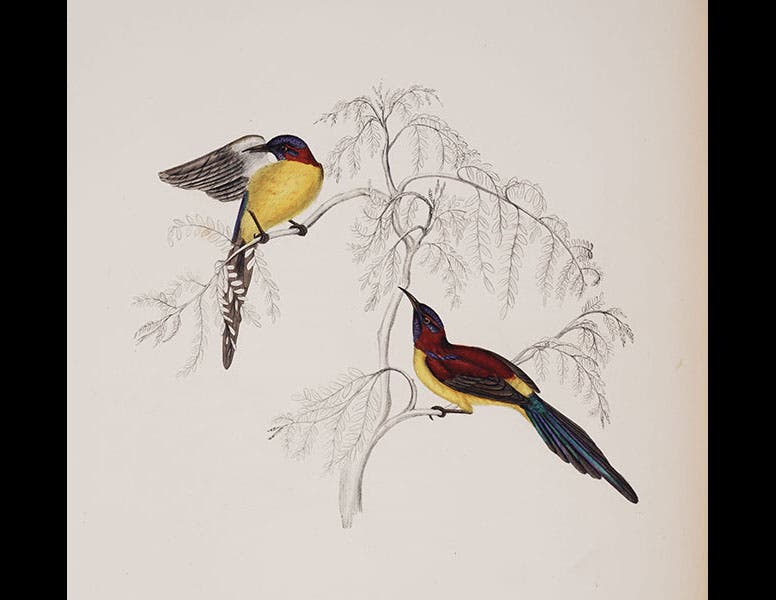
Linda Hall Library
Elizabeth Coxen Gould, an English artist, was born July 18, 1804. In 1829, she married John Gould, an up-and-coming ornithologist, and Elizabeth immediately became the official family draughtswoman, finishing John’s rough drawings and executing the lithographs for the fascicles of bird prints that John began issuing by subscription in 1830. The examples above are all from The Century of Birds from the Himalaya Mountains (1830-32), and we chose it because each plate is signed "Drawn from nature & on stone by E. Gould." In the next large work, The Birds of Europe (1833-37), the plates are signed "Drawn from nature & on stone by J. & E Gould", even though John did not play any greater role in the production of these prints than in the Century. In the bird volume of Charles Darwin's Zoology of the Beagle (1841), for which Elizabeth did the lithographs of the famous finches, the plates are not signed, and she received no acknowledgement in the text at all. This was the unfortunate fate of many illustrator-wives in the 19th century.
Elizabeth went to Australia with John in 1838 (leaving her 3 youngest children behind) and spent two years there, capturing the local birds and mammals on paper. John and Elizabeth returned to England in 1840, but sadly, Elizabeth died of puerperal fever in 1841, after giving birth to their eighth child. She was only 37 years old. All of her Australian paintings were lithographed and eventually published in such volumes as The Mammals of Australia (1863), but she received no credit at all in any of these posthumous publications.
The images show, in order, Shore's woodpecker; Alcedo guttatis, a kingfisher; a detail of Muscepta peregrina, a flycatcher; Garrulus striatus, a jay; Pallas's dipper; and a detail of a pair of Aethopyga gouldiae, usually called Mrs. Gould's sunbird. The last was named after Elizabeth by the naturalist Nicholas Vigors, who supplied most of the bird descrpitons for the Century volume.
Elizabeth was one of 12 women artists featured in the Library’s 2005 exhibition, Women’s Work. All of the volumes mentioned here are in the Library’s History of Science Collection. Her portrait (seventh image) is in a private collection.
Regular readers of this column might recall that we did a piece last year on Peter Simon Pallas, after whom Pallas’s dipper was named, and for the occasion we commissioned a pencil drawing of Pallas’s dipper from Melissa Dehner, our staff artist, which compares quite favorably with the dipper from the hand of Elizabeth Gould.
Dr. William B. Ashworth, Jr., Consultant for the History of Science, Linda Hall Library and Associate Professor, Department of History, University of Missouri-Kansas City. Comments or corrections are welcome; please direct to ashworthw@umkc.edu.

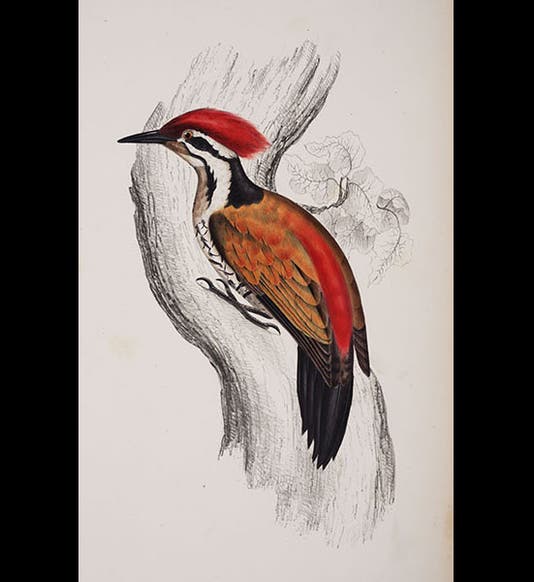
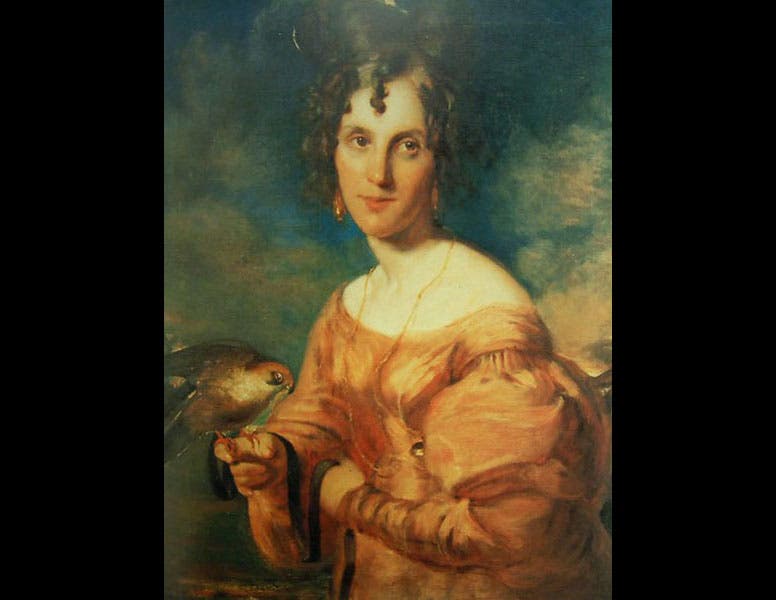

![“Aurora Borealis,” hand-colored wood engraving by Josiah Wood Whymper, [Natural Phenomena], plate 2, 1846 (Linda Hall Library)](https://assets-us-01.kc-usercontent.com:443/9dd25524-761a-000d-d79f-86a5086d4774/0245ffcb-b70c-477c-8792-0a73ebd54eb2/Whymper%2011.jpg?w=210&h=210&auto=format&fit=crop)


